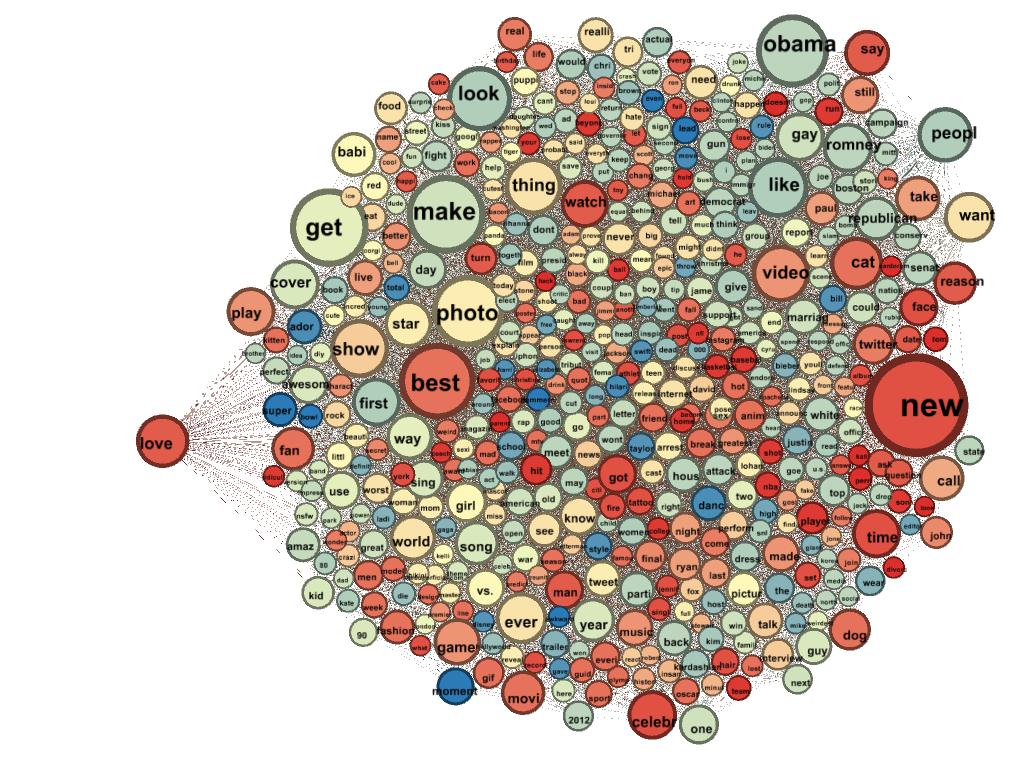Bernard Berelson defined content analysis as "a research method for an objective, systematic and quantitative description of the explicit content of messages." Content analysis in sociology is a research tool that focuses on actual content and internal data features. It is used to determine the presence of certain words, concepts, themes, phrases, characters or sentences in texts or sets of texts and to quantify this presence in an objective way.

Texts can be broadly defined as books, book chapters, essays, interviews, discussions, newspaper headlines and articles, historical documents, speeches, conversations, advertising, theater, informal conversation, or even any appearance of a communicative language. To conduct a content analysis, the text is encoded or divided into manageable categories at different levels: a word, the meaning of a word, a phrase, a sentence or a topic, and then examined using one of the methods of content analysis. In sociology, this is a conceptual or relational analysis. The results are then used to draw conclusions about messages within the text, author, audience, and even the culture and time in which they participate. For example, content may indicate features such as completeness or intent, bias, prejudice, and mistrust of authors, publishers, and all other persons responsible for the content.
Content Analysis History
Content analysis is a product of the electronic age. It began in the 1920s in American journalism - while content analysis was used to study the contents of the press. Currently, the scope of application is much broader and includes a number of areas.
Although content analysis was regularly conducted as early as the 1940s, it became a more reliable and frequently used research method only in the next decade, as researchers began to focus on concepts, not just words, and semantic relationships, rather than just presence .
Using content analysis
Due to the fact that it can be used to study any fragment of a text or record, that is, to analyze any documents, content analysis is used in sociology and in other areas, starting from marketing and media research, ending with literature and rhetoric , ethnography and cultural studies, gender and age problems, for data analysis in sociology and political science, psychology and cognitive science, as well as other areas of research. In addition, content analysis reflects a close relationship with socio-and psycholinguistics and plays an integral role in the development of artificial intelligence. The following list offers more options for using content analysis:
- Identification of international differences in communication content.
- Detecting the existence of propaganda.
- Determining the intent, focus, or trend of communication of an individual, group, or institution.
- Description of relationships and behavioral reactions to communication.
- Determining the psychological or emotional state of people or groups.
Content Analysis Objects
In sociology, content analysis is the study of texts to study the social processes (objects or phenomena) that these texts represent. The source of sociological information is protocols, reports, decisions, speeches by politicians, newspapers, magazines, works, illustrations, films, blogs, diaries, etc. Based on changes in texts, one can identify various trends, political and ideological attitudes, the deployment of political forces , the functioning of public institutions of interest, public organizations and parties that are directly related to the object of analysis.
Types of Content Analysis
Content analysis in sociology is the most important method of collecting and processing documentary information. It can be used both for primary data collection, and for processing already collected data - for example, when working with transcripts of interviews, focus groups, etc. There are two general types of content analysis in sociology: conceptual and relational analysis. Conceptual can be considered as the establishment of the existence and frequency of concepts in the text. Relational is based on conceptual analysis, exploring the relationship between concepts in the text.
Conceptual analysis
Traditionally, content analysis as a research method in sociology was most often considered from the point of view of conceptual analysis. In the latter, a concept for studying and the number of its occurrences in the recorded text is selected. Since the terms can be implicit as well as explicit, it is important to clearly define the former before starting the counting process. To limit subjectivity in the definitions of concepts, specialized dictionaries are used.
As with most other research methods, conceptual analysis begins by identifying research questions and selecting a sample or samples. Once selected, the text should be encoded into managed content categories. The coding process is basically a selective abbreviation, which is the central idea of content analysis. By breaking down the contents of materials into meaningful and relevant units of information, some characteristics of the message can be analyzed and interpreted.
Relational analysis
As indicated above, relational analysis is based on conceptual analysis, exploring the relationship between concepts in the text. And, as with other types of research, the initial choice as to what is being studied and / or encoded often determines the possibilities of this particular research. For relational analysis, it is important to first decide what type of concept will be studied. The studies were conducted both with one category and with as many as 500 categories of concepts. Obviously, too many categories can make your results unclear, and too few can lead to unreliable and potentially invalid conclusions. Therefore, it is important that the coding procedures are based on the context and needs of your research.

There are many methods of relational analysis, and this flexibility makes it popular. Researchers can develop their own procedures according to the nature of their project. After a thorough review of the procedure, it can be applied and compared by population over time. The process of relational analysis has achieved a high degree of computer automation, but still, like most forms of research, it takes a lot of time. Perhaps the strongest statement that can be made is that it retains a high degree of statistical rigor, without losing the richness of detail that is manifested in other qualitative methods.
Advantages of the technique
The method of content analysis in sociology has several advantages for researchers. In particular, content analysis:
- looks directly at communication through texts or transcripts and, therefore, falls into the central aspect of social interaction;
- can provide both quantitative and qualitative operations;
- can provide valuable historical / cultural information over time through text analysis;
- allows proximity to the text, which can alternate between specific categories and relationships, and also statistically analyzes the encoded form of the text;
- can be used to interpret texts for purposes such as developing expert systems (since knowledge and rules can be encoded in terms of explicit statements about the relationship between concepts);
- It is an unobtrusive means of analyzing interactions;
- provides an understanding of complex patterns of human thinking and language use;
- in case of good execution it is considered as a relatively “accurate” research method.
Disadvantages of Content Analysis
This method has not only advantages, but also disadvantages, both theoretical and procedural. In particular, content analysis:
- can be extremely time consuming;
- It is at increased risk of error, especially when relational analysis is used to achieve a higher level of interpretation.
- often lacking a theoretical basis or trying too liberally to make meaningful conclusions about the connections and effects implied in the study;
- at its core is reductive, especially when working with complex texts;
- too often tends to simply consist of word counts;
- it often ignores context;
- it is difficult to automate or computerize.
An example of content analysis in sociology
As a rule, researchers begin by identifying questions that they would like to answer by analyzing the content. For example, they may be interested in how women are portrayed in commercials. After that, researchers will select a data set from an ad — perhaps the script for a series of television commercials — for analysis.
Then they will study and count the use of certain words and images in commercials. To continue this example, researchers can study television ads for stereotypical gender roles, since language may imply that women in advertising are less knowledgeable than men, as well as for sexual objectification of any gender.
Functional Analysis in Sociology
Functional analysis is a methodology that is used to explain how a complex system works. The main idea is that the system is considered as a function calculation (or, more generally, to solve the problem of information processing). Functional analysis suggests that such processing can be explained by the decomposition of this complex function into a set of simpler functions, which are calculated by an organized system of subprocesses.
Functional analysis is important for cognitive science because it offers a natural methodology to explain how information is processed. For example, any “black box diagram” proposed as a model or theory by a cognitive psychologist is the result of the analytical stage of a functional analysis. Any suggestion of what constitutes a cognitive architecture can be regarded as a hypothesis about the nature of cognitive functions at the level at which these functions are included.